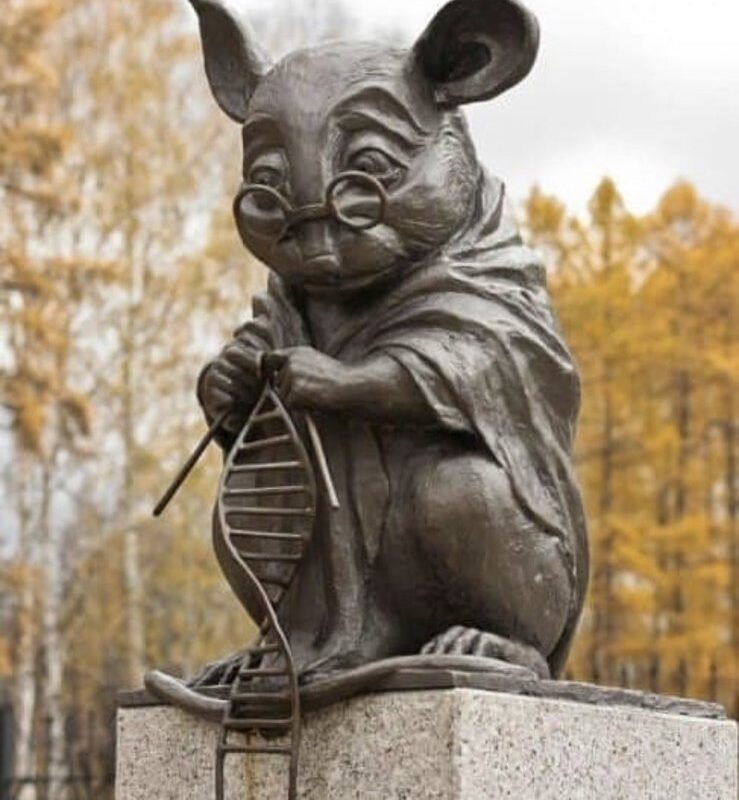In Siberia, Russia, a bronze statue stands, portraying a laboratory mouse engaged in knitting a double helix of DNA. This sculpture serves as a tribute to all the mice that were sacrificed for genetic research aimed at developing new drugs to combat diseases. The artist behind this creation is Andrew Kharkevich.
A closer examination of the statue reveals that the DNA structure twists to the left, representing Z-DNA, which is one of the possible double helical configurations of DNA. While Z-DNA is less common than the right-twisting B-DNA, its inclusion in the monument symbolizes the ongoing work required in this field.
The first-ever photograph of DNA was captured by Rosalind Franklin, a remarkable woman who used X-ray technology. This groundbreaking image provided the basis for James Watson and Francis Crick to accurately describe the double helix structure. Although Watson and Crick went on to receive the Nobel Prize in 1962 for their work, Rosalind Franklin was not recognized alongside them. Tragically, she had passed away in 1958 due to ovarian cancer, likely caused by her extensive exposure to radiation during her X-ray research on the double helix.

1 Comment